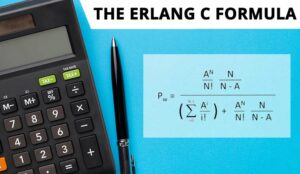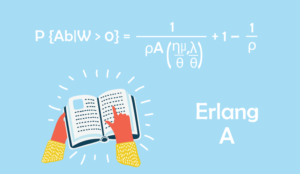We have put together a brief definition of the Erlang C Formula, and how it works in contact centres, as well as some great links for further reading and resources.
The Erlang C Formula Defined
The Erlang C formula is a mathematical equation for calculating the number of agents (advisors) that you need in a call centre, given the number of calls and the service level that you want to achieve.
Erlang Formula Inputs
The inputs to the Erlang C formula are:
- Incoming Contacts (calls)
- Reporting Period (minutes
- Average Handling Time (AHT) (seconds)
- Required Service Level Percentage
- Target Answer Time (seconds)
Example
For example you have 400 calls per half hour. The average time taken to handle a call is 600 seconds and you want to answer 80% of the calls in 20 seconds.
There are also a number of ways to extend the basic formula
- Shrinkage – A factor to include holidays, meetings, training etc
- Maximum Occupancy (usually set to 85%
- Average time to abandon (used in the Erlang A formula)
Erlang Formula Outputs
The main output of the Erlang C formula is the number of agents needed to handle the contact volume.
Erlang C Formula Step By Step
The mathematics behind it can be quite complex but there is a good article that describes the Erlang C formula step-by-step.
The Erlang Calculator
Luckily the easiest way to use the Erlang C formula is to use an erlang calculator.
There are two main types of Erlang Calculator
Author: Jonty Pearce
Reviewed by: Robyn Coppell
Published On: 12th May 2022 - Last modified: 14th Aug 2024
Read more about - Definitions, Erlang Calculations



































